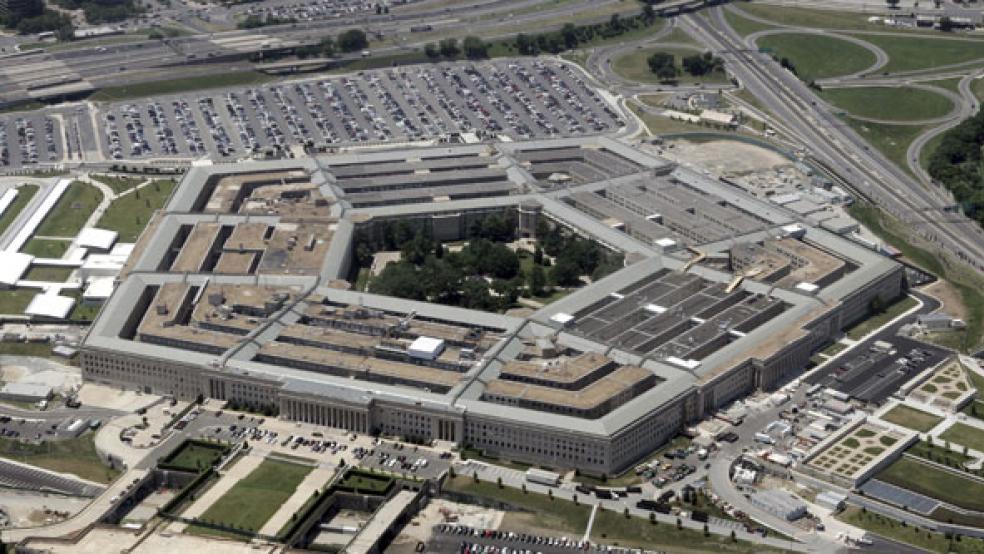In the span of about 24 hours, a handful of lawmakers on both sides of the aisle threw up roadblocks to $18 billion in cost-cutting measures at the Pentagon.
About half a dozen members of Congress, independently of each other, raised objections this week to a slew of spending reductions proposed by the Defense Department as part of its fiscal 2015 budget request. The cuts range from deactivating a warplane that was designed in the 1970s to reducing funds for taxpayer-subsidized commissaries to trimming the size of the National Guard.
Related: DOD Is Stuck with a Flawed $1.5 Trillion Fighter Jet
The efforts underscore life in a post-earmark era: If you can’t bring home more bacon, make sure you preserve the bacon you have.
“This is something that’s surprisingly bipartisan,” said Sean Kennedy, director of research at Citizens Against Government Waste, a nonprofit based in Washington, D.C. “It’s really an attitude that projects are only wasteful if they’re in another member’s district. They’re unwilling to see a drawdown in spending in their own districts.”
Congress ostensibly implemented a ban on earmarks in 2011. However, it’s not uncommon for lawmakers to prioritize or protect military programs that benefit their constituents.
“The earmark moratorium coupled with constrained budgets means every dollar is being fought over,” said Steve Ellis, vice president at Taxpayers for Common Sense, a nonpartisan watchdog. “There is a lot of grousing about budgets and overspending, but when it comes to changes that could affect some of their constituents, it’s hands off.”
Related: Intelligence Chair Fears Putin Has New Target: Armenia
One Pentagon proposal that’s drawing objections from lawmakers is the retirement of the A-10 Warthog, aircraft initially designed in the 1970s to provide support to ground troops. Secretary of Defense Chuck Hagel said that replacing the planes with F-35 fighter jets will save $3.5 billion over the next five years. Just last year, though, Congress prohibited the Pentagon from even planning to retire many of the A-10 warplanes in 2014.
Leading the charge against axing the A-10 are Republican Senators John McCain of Arizona, Saxby Chambliss of Georgia and Kelly Ayotte of New Hampshire, whose husband was an A-10 pilot. The three, all members of the Senate Armed Services Committee, wrote an opinion piece that appeared Wednesday, saying the retirement of the A-10 would endanger the lives of U.S. troops.
“That is why we will continue to oppose the Air Force’s proposed premature divestment of the A-10 until an equally effective replacement reaches full operational capability,” the senators wrote. “With the lives of our brave soldiers on the line, we owe them nothing less.”
Meanwhile, Sen. Barbara Mikulski (D-MD) Wednesday railed against a Pentagon proposal to cut $1 billion in funding to military commissaries over three years.
Related: Lifelong Pensions for Vets Could Be Whacked Under Pentagon Proposal
Commissaries are taxpayer-subsidized grocery stores that offer about 30 percent discounts to military personnel and their families, compared with commercial supermarket prices. That means individuals who regularly shop at commissaries save about $1,500 a year and a family of four saves about $4,500 a year, according to the Defense Commissary Agency. The Pentagon’s proposal would not close any of the 178 commissaries in the U.S. or the 67 stores overseas, while discounts for shoppers would drop to 10 percent.
“The fact that now we’re actually going to cut the commissaries, can you believe that?” Mikulski, who chairs the Senate Appropriations Committee, said at a hearing on military health. “We’ll spend millions and millions and billions on many of the things that we do that are important – I don’t minimize it – but we need to be looking at what do we do to support the military family.”
Last month the White House sent Congress its fiscal 2015 budget request, which called for $496 billion in Pentagon spending. The amount included a $3.8 billion, or 4 percent, decrease in procurement costs compared with current levels.
Related: DOD Launches New Offensive in Cyber-Expert Hiring
“Unfortunately, there is a cadre of lawmakers that just want more Pentagon spending period and they are able to use fear of some cuts to fight against any cuts,” said Ellis of Taxpayers for Common Sense.
On Tuesday, some members of the Senate Armed Services Committee pushed back against Pentagon plans to shift Apache helicopters from the National Guard over to the active Army, a move the DOD says will contribute to savings of about $12 billion over several years and reduce the number of National Guard troops.
Sen. Lindsey Graham (R-SC) said he would propose an independent commission to study troop levels before moving ahead with any changes, though the Pentagon said doing so would increase costs $1 billion a year until an analysis is complete. Sen. Jeff Sessions (R-AL) added that it “worries him” to know that some National Guard pilots could be told they’re not needed anymore, saying it could harm morale.
“We would just warn against anything in the Department of Defense becoming a jobs program,” said Kennedy at Citizens Against Government Waste. “That shouldn’t be the purpose of the Department of Defense.”
Top Reads from The Fiscal Times:





